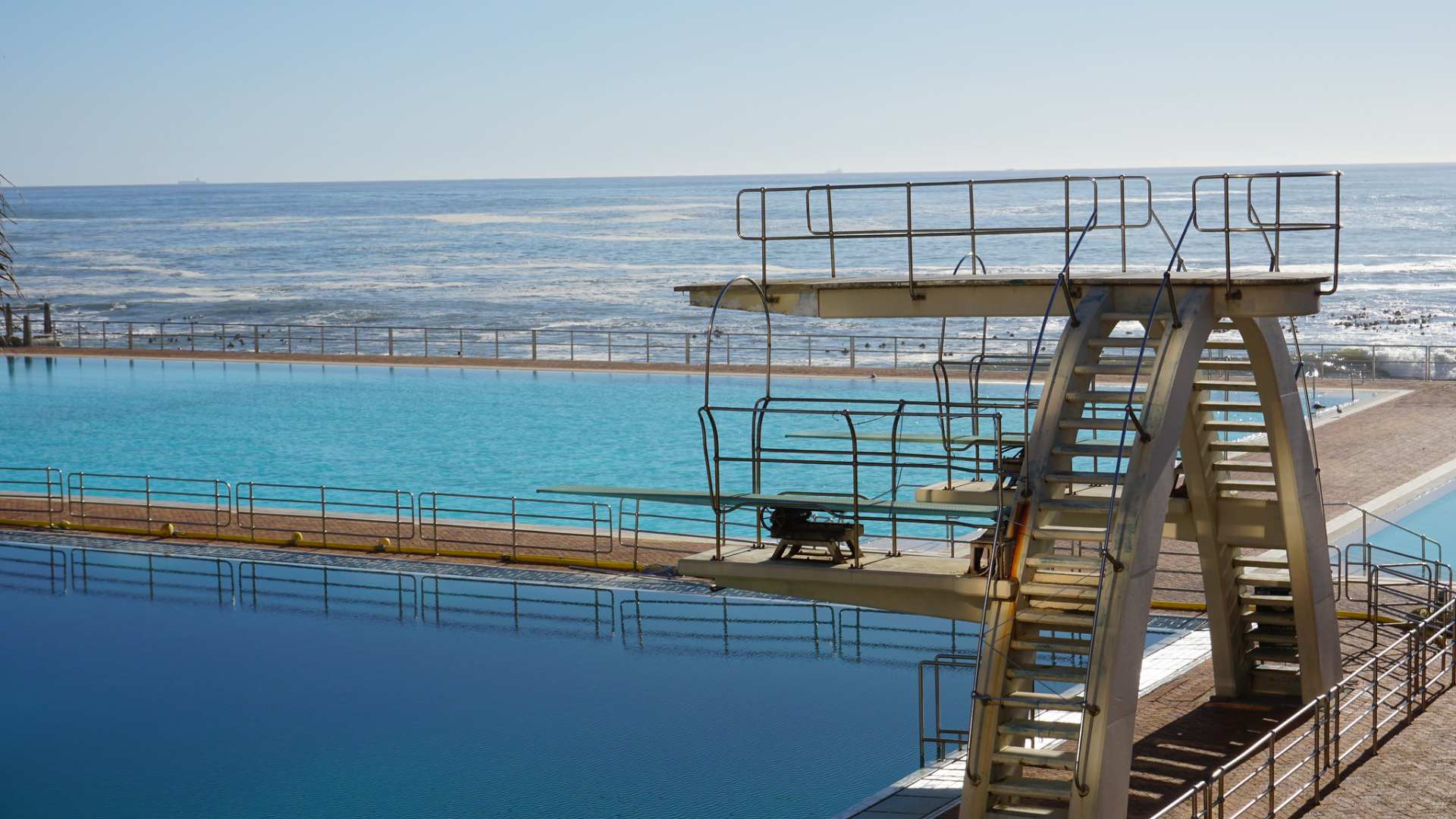
Sea Point Swimming Pool: The fascinating history of a landmark
Ever wondered about the history of one of Cape Town’s most iconic pools? Here’s the story behind Sea Point Swimming Pool…

The Sea Point Swimming Pool, one of Cape Town’s most famous and popular landmarks, has a rich and interesting history that dates back to the mid-20th century and is deeply intertwined with the cultural and social evolution of Cape Town. Here’s a look into the pool’s past…
Pre-1950s: Cape Town’s development and demand for leisure spaces
In the early 20th century, as Cape Town developed into a growing urban center, the Atlantic Seaboard became increasingly popular among locals as well as visitors. The Sea Point area in particular, attracted many for recreation, but public swimming facilities were limited, as Cape Town residents often sought safe and clean spaces for bathing and swimming along the rocky coastline, where ocean currents were strong and conditions could be dangerous.
As urban planning in the city progressed, there was a demand for more structured leisure facilities. This led to the proposal for a public pool on the Sea Point beachfront that would provide a safe environment for swimmers while maintaining the coastal atmosphere.
1959: Opening of Sea Point Swimming Pool
The pool was then officially opened in 1959, becoming an important addition to the city’s recreational infrastructure. It was designed to blend in with its coastal surroundings while offering a modern facility for the local community.
It was also decided that the swimming pool would be filled with filtered seawater drawn directly from the Atlantic Ocean. This decision created a distinct experience for swimmers, combining the benefits of natural seawater with the safety of a controlled swimming space.
1960s-1980s: Popularity and expansion
During the 1960s and 1970s, the Sea Point Swimming Pool became a beloved leisure spot for Capetonians. It gained popularity across various groups, from families looking for a day out, to athletes and swimmers who used the pool for training. In the 1970s, the facility underwent some upgrades, including the addition of a diving pool and a children’s splash pool to cater to different age groups and activities.
Unfortunately, like most public facilities in South Africa during the apartheid era, the Sea Point Swimming Pool was subject to racial segregation policies. The pool was designated for the exclusive use of white people under apartheid’s “whites-only” laws.
1990s: Post-Apartheid transformation
After the fall of apartheid in the early 1990s, South Africa, including Cape Town, underwent significant societal changes. Public facilities like the Sea Point Swimming Pool were then opened to everyone, regardless of race. This shift was symbolic of the broader transition in the country towards equality and inclusion.
Today: A cultural and recreational landmark
Today, the Sea Point Swimming Pool is considered one of the most beautiful public pools in the world, thanks to its stunning location with views of the Atlantic Ocean, Table Mountain, and Lion’s Head.
The pool is not just a place for swimming but also a cultural landmark, representing Cape Town’s journey through historical change, from segregation to unity. It remains a significant part of the city’s identity, serving as a gathering place for people from all walks of life and a reminder of the city’s connection to the sea.